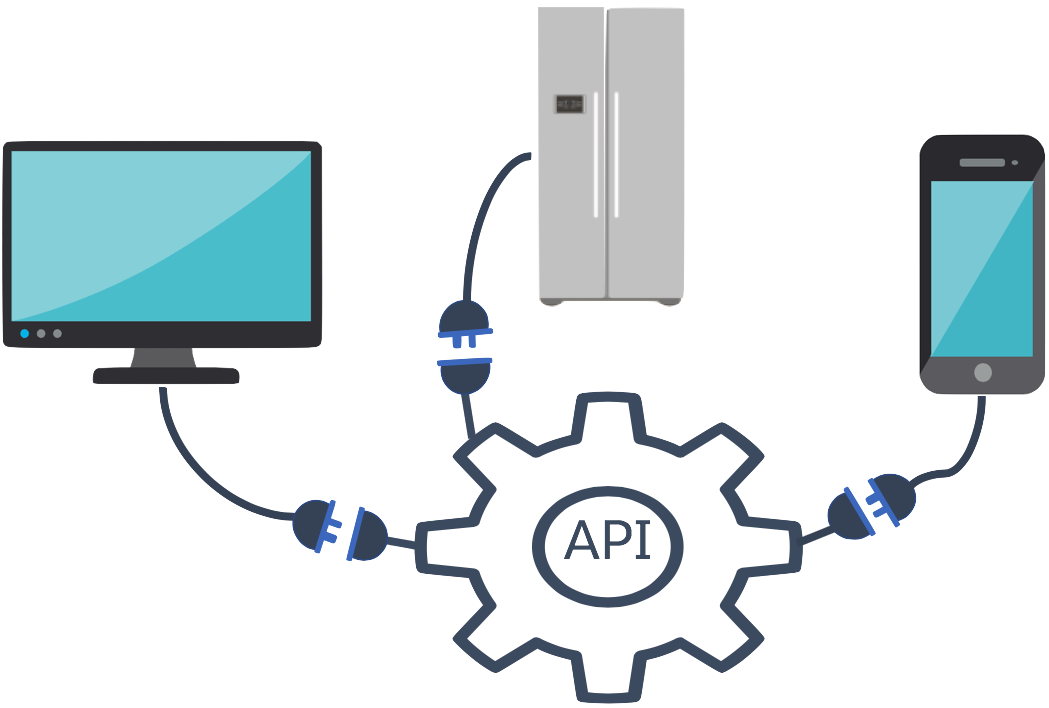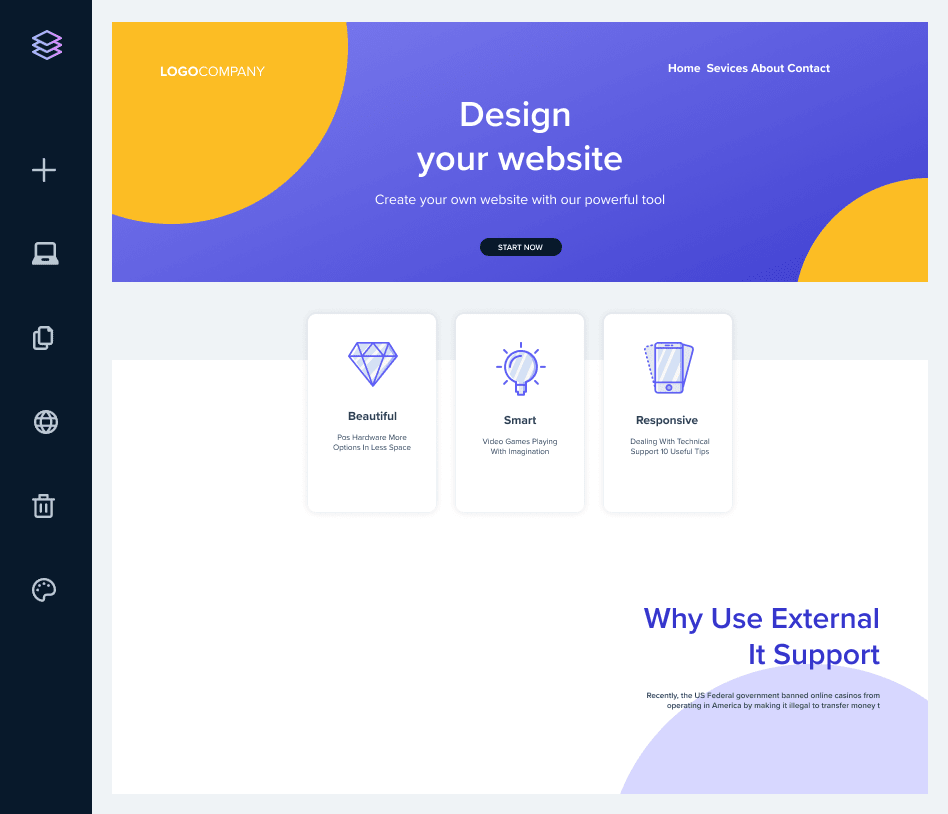Introduction
Welcome to our guide on harnessing the power of the Flaticon API! Flaticon is a popular platform that offers a vast collection of high-quality icons for various purposes. With its API, developers can seamlessly integrate these icons into their applications, websites, and projects, enhancing their visual appeal and functionality.
In this blog post, we'll delve into the capabilities of the Flaticon API, explore how it works, and provide you with practical insights on leveraging its features effectively. Whether you're a seasoned developer or just starting with APIs, this guide will equip you with the knowledge to make the most out of Flaticon's extensive icon library.
Also Read This: Imago Stock Photos for Website Success
Understanding Flaticon API

The Flaticon API is a powerful tool that allows developers to access Flaticon's extensive collection of icons programmatically. By integrating the API into their projects, developers can dynamically retrieve icons, customize their appearance, and incorporate them seamlessly into their applications and websites.
Here are some key aspects to understand about the Flaticon API:
- Access to Millions of Icons: The Flaticon API provides access to millions of icons covering a wide range of categories and styles. Whether you need icons for web design, mobile apps, or presentations, you'll find a diverse selection to choose from.
- RESTful API: The Flaticon API follows the RESTful architectural style, making it easy to integrate into any development environment. Developers can make HTTP requests to the API endpoints to retrieve the desired icons and associated metadata.
- Search and Filter Functionality: With the Flaticon API, developers can search for icons based on keywords, categories, styles, and other criteria. This search and filter functionality enables precise retrieval of icons tailored to specific project requirements.
- Customization Options: Developers can customize the appearance of icons retrieved through the Flaticon API. This includes adjusting size, color, and other visual attributes to seamlessly integrate icons into the overall design of their applications.
- Scalability and Performance: The Flaticon API is designed for scalability and performance, ensuring fast and reliable access to icons even in high-traffic environments. Developers can rely on the API to deliver icons promptly without compromising user experience.
Additionally, Flaticon provides comprehensive documentation and resources to help developers get started with the API integration process. The documentation includes detailed explanations of API endpoints, request parameters, authentication methods, and usage examples.
By understanding the capabilities and functionalities of the Flaticon API, developers can unlock a wealth of creative possibilities and enhance the visual appeal of their projects with ease.
Also Read This: How to Contact an Artist on Shutterstock for Custom Work
How to Get Started with Flaticon API

Getting started with the Flaticon API is a straightforward process that involves a few key steps. Follow these guidelines to begin leveraging the power of Flaticon's extensive icon library in your projects:
- Sign Up for a Flaticon Account: Before you can access the Flaticon API, you'll need to sign up for an account on the Flaticon website. Registration is free and only takes a few moments.
- Generate API Key: Once you have a Flaticon account, navigate to the API section of your account dashboard. Here, you'll find the option to generate an API key. This key will be used to authenticate your requests to the Flaticon API.
- Review Documentation: Familiarize yourself with the documentation provided by Flaticon for their API. The documentation contains essential information on API endpoints, request parameters, authentication methods, and usage examples. Understanding this documentation is crucial for effectively integrating the API into your projects.
- Explore API Endpoints: Take some time to explore the available API endpoints and their functionalities. Flaticon API offers various endpoints for searching icons, retrieving icon details, and managing user preferences. Determine which endpoints are relevant to your project requirements.
- Authenticate Requests: When making requests to the Flaticon API, ensure that you include your API key in the request headers for authentication purposes. This key authenticates your identity and grants access to the API resources.
- Start Coding: With the necessary setup and documentation review complete, you're ready to start coding! Use your preferred programming language and HTTP client library to interact with the Flaticon API. Begin by making simple API requests to retrieve icons and gradually incorporate more advanced features into your projects.
By following these steps, you'll be well on your way to integrating the Flaticon API into your applications and unlocking the vast potential of Flaticon's icon collection.
Also Read This: Access Template Memberships with Canva Template Membership
Exploring Flaticon API Features
The Flaticon API offers a range of features and functionalities that empower developers to seamlessly integrate icons into their projects. Let's explore some of the key features of the Flaticon API:
- Icon Search: The Flaticon API allows developers to search for icons using keywords, categories, styles, and other criteria. This powerful search functionality enables precise retrieval of icons tailored to specific project requirements.
- Icon Retrieval: Developers can retrieve individual icons or sets of icons programmatically through the Flaticon API. Icons are available in various formats, including SVG and PNG, making them compatible with a wide range of applications and platforms.
- Customization Options: With the Flaticon API, developers can customize the appearance of icons to suit their design preferences. This includes adjusting the size, color, and other visual attributes of icons dynamically within their applications.
- Icon Collections: Flaticon offers curated collections of icons organized by themes, styles, and trends. Developers can explore these collections through the API to discover relevant icons for their projects and streamline the icon selection process.
- Integration Support: The Flaticon API is designed for seamless integration with various programming languages and frameworks. Whether you're building a web application, mobile app, or desktop software, you can easily incorporate Flaticon's icons into your project's user interface.
In addition to these core features, the Flaticon API provides advanced functionalities for managing user preferences, accessing premium icon sets, and integrating with third-party services. Developers can leverage these features to enhance the visual appeal and functionality of their applications while saving time and resources.
Furthermore, Flaticon regularly updates its API with new features and enhancements based on user feedback and emerging trends in icon design. This ensures that developers have access to the latest tools and capabilities for integrating icons seamlessly into their projects.
Overall, by exploring the features of the Flaticon API, developers can unlock a world of creative possibilities and elevate the user experience of their applications through the use of high-quality icons.
Also Read This: Design Professional Resumes with Canva Templates Resume
Integrating Flaticon API into Your Projects
Integrating the Flaticon API into your projects is a straightforward process that can enhance the visual appeal and functionality of your applications. Here's a step-by-step guide to integrating Flaticon API into your projects:
- Choose Your Development Platform: Determine the platform on which you'll be integrating Flaticon API. Whether you're developing a web application, mobile app, or desktop software, Flaticon API can be integrated into various environments.
- Access API Documentation: Familiarize yourself with the Flaticon API documentation, which provides comprehensive information on endpoints, parameters, authentication methods, and usage examples. Understanding the documentation is essential for successful integration.
- Generate API Key: Obtain an API key from the Flaticon website by signing up for an account and navigating to the API section of your account dashboard. This API key will be used to authenticate your requests to the Flaticon API.
- Make API Requests: Use your preferred programming language and HTTP client library to make requests to the Flaticon API endpoints. Depending on your project requirements, you can retrieve icons, search for specific icons, or explore curated collections.
- Handle API Responses: Handle the responses from the Flaticon API in your application code. This may involve parsing JSON or XML data returned by the API, extracting relevant information, and displaying icons within your application's user interface.
- Customize Icon Display: Utilize the customization options provided by the Flaticon API to tailor the appearance of icons to match your application's design aesthetic. You can adjust the size, color, and other visual attributes of icons dynamically based on user preferences or application requirements.
By following these steps, you can seamlessly integrate Flaticon API into your projects and leverage its extensive collection of icons to enhance the visual experience for your users. Whether you're building a website, mobile app, or desktop software, Flaticon API provides the tools and resources you need to elevate your project's design.
Also Read This: Create Effective Landing Pages with Canva Landing Page Template
Best Practices for Utilizing Flaticon API
When integrating the Flaticon API into your projects, following best practices can help optimize performance, ensure data security, and enhance the user experience. Here are some recommended best practices for utilizing Flaticon API:
- Cache Frequently Used Icons: To minimize API calls and improve performance, consider caching frequently used icons locally within your application. This reduces latency and ensures faster loading times for users.
- Use Efficient Search Queries: When searching for icons using the Flaticon API, use efficient search queries to retrieve relevant results quickly. Utilize keywords, categories, and filters effectively to narrow down search results and find the desired icons efficiently.
- Optimize Icon Sizes: Choose appropriate icon sizes based on the context in which they will be displayed. Avoid unnecessarily large icon sizes to reduce bandwidth usage and improve page loading times, especially for mobile users.
- Implement Error Handling: Handle errors gracefully in your application when interacting with the Flaticon API. Implement robust error handling mechanisms to handle API rate limits, network errors, and other potential issues to prevent disruptions in user experience.
- Secure API Key: Keep your Flaticon API key secure and avoid exposing it publicly in client-side code or repositories. Use environment variables or secure storage mechanisms to protect your API key from unauthorized access.
- Stay Updated: Regularly check for updates and announcements from Flaticon regarding API changes, new features, and best practices. Stay informed about any deprecations or enhancements to ensure your integration remains up-to-date and compatible with the latest API version.
By adhering to these best practices, you can optimize the integration of Flaticon API into your projects, improve performance, and provide a seamless user experience. Additionally, incorporating these practices into your development workflow promotes code efficiency, maintainability, and scalability.
Also Read This: How to Edit a Project in Behance
FAQ
Here are some frequently asked questions about the Flaticon API:
1. What is the Flaticon API?
The Flaticon API is a programming interface that allows developers to access Flaticon's vast collection of icons programmatically. It provides endpoints for searching icons, retrieving icon details, and customizing icon appearance.
2. How do I get access to the Flaticon API?
To access the Flaticon API, you need to sign up for a Flaticon account and generate an API key from your account dashboard. The API key is used to authenticate your requests to the API.
3. What programming languages are supported by the Flaticon API?
The Flaticon API can be integrated into applications developed using any programming language that supports HTTP requests. Commonly used languages include JavaScript, Python, Java, Ruby, and PHP.
4. Can I use the icons obtained from the Flaticon API for commercial projects?
Yes, you can use the icons obtained from the Flaticon API for commercial projects. However, you must comply with Flaticon's licensing terms and attribute the icons appropriately as per the licensing agreement.
5. Is there a limit to the number of API requests I can make?
Yes, Flaticon imposes rate limits on API requests to ensure fair usage and prevent abuse. The rate limits may vary depending on your subscription plan and usage tier. It's recommended to review Flaticon's documentation for details on rate limits and usage quotas.
Conclusion
In conclusion, the Flaticon API offers developers a powerful solution for accessing and integrating high-quality icons into their projects with ease. Through this guide, we have explored the various aspects of the Flaticon API, from understanding its functionality to best practices for integration.
By harnessing the capabilities of the Flaticon API, developers can enhance the visual appeal and user experience of their applications, websites, and software projects. Whether you're building a simple website or a complex mobile application, Flaticon's extensive collection of icons and flexible API endpoints provide the tools you need to create visually stunning interfaces.
Furthermore, the Flaticon API's documentation, search functionality, and customization options empower developers to efficiently find and customize icons to suit their project requirements. With support for multiple programming languages and robust error handling mechanisms, integrating Flaticon API into your projects is seamless and straightforward.
As you embark on your journey of integrating Flaticon API into your projects, remember to follow best practices, stay informed about updates, and leverage the rich features offered by Flaticon to unlock the full potential of icon integration.
Overall, Flaticon API opens up a world of creative possibilities, allowing developers to elevate their projects with visually appealing icons and deliver exceptional user experiences. Start integrating Flaticon API today and take your projects to new heights!
